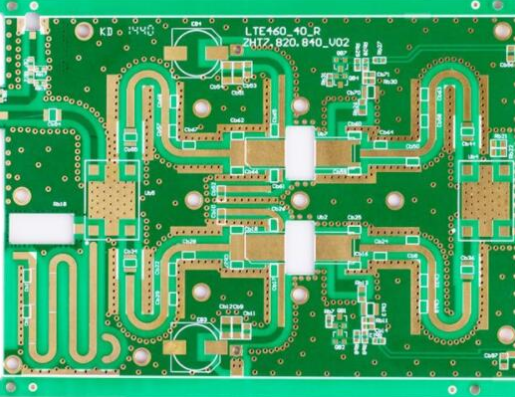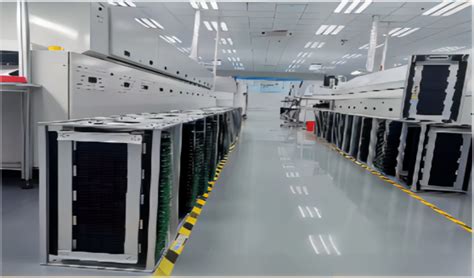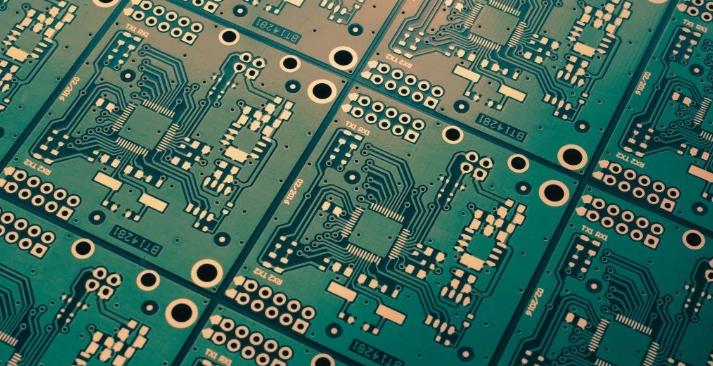Innovations in Aerospace PCB Assembly for Advanced Technologies
Key Takeaways
The realm of aerospace PCB assembly (PCBA) is experiencing a transformative evolution, driven by a series of innovative techniques and technologies. With the increasing demand for reliability and efficiency in the aerospace sector, manufacturers are adopting advanced materials and innovative manufacturing processes that are tailored to meet the unique challenges posed by aviation applications. These enhancements in pcb assembly practices not only improve the performance of components but also ensure they can withstand the harsh environments typically encountered in flight.
Key strategies include the integration of new composite materials that provide superior thermal and mechanical properties, as well as cutting-edge automation techniques that streamline production processes. Such advancements result in higher yields, reduced cycle times, and ultimately a more cost-effective approach to producing high-quality aerospace PCBs. Moreover, emerging technologies such as robotics and AI-driven quality assurance systems play a significant role in enhancing process efficiency and ensuring compliance with stringent industry standards.
The impact of these innovations is evident in several recent case studies where companies have successfully implemented these advancements to solve complex challenges. By focusing on continuous improvement in pcb assembly, aerospace manufacturers are not just advancing current technologies but are also paving the way for future developments that promise even greater enhancements in performance and reliability within the aviation industry.
Overview of Aerospace PCB Assembly: Key Trends and Technologies
The realm of aerospace PCB assembly has witnessed remarkable transformations driven by the need for enhanced performance and reliability in increasingly complex aviation systems. One of the most notable trends is the integration of advanced materials and manufacturing techniques that prioritize lightweight construction while maintaining structural integrity. The advent of high-frequency PCBA applications has necessitated the use of specialized materials designed to handle extreme conditions, such as thermal cycling and radiation exposure. In addition, the evolution of 3D printing technology has complemented traditional methods, enabling manufacturers to create more intricate designs that were previously deemed impossible, thereby maximizing efficiency in the PCB assembly process.
Furthermore, automation plays a crucial role in modern aerospace PCBA, with robotics being increasingly employed for precision assembly tasks. This leads to not only improved turnaround times but also enhanced consistency and quality control throughout production. As aerospace systems continue to evolve with new technologies, including automation and additive manufacturing, it is essential that firms stay ahead by adopting these innovative techniques. The focus on sustainability is also emerging as a critical element within these trends, as manufacturers seek to reduce waste and energy consumption while producing high-quality aerospace PCBs.
Overall, these advancements highlight a significant shift towards integrating cutting-edge technologies into aerospace PCB assembly, ensuring that the industry can meet the challenges posed by next-generation aviation demands while maximizing performance and efficiency.
Innovative Techniques in PCB Manufacturing for Aerospace Applications
The aerospace industry demands high-performance and reliable solutions, making PCB assembly an essential element in the design and manufacturing of advanced aerospace systems. Innovative techniques in PCBA have emerged to address these challenges, incorporating state-of-the-art methods that optimize both the manufacturing process and the end product’s performance. For instance, the implementation of automated assembly technologies enhances precision while reducing production time, critical for meeting tight deadlines in aerospace projects. Additionally, advanced soldering methods, such as selective soldering and laser soldering, contribute to the robustness of joints under extreme stress conditions typically encountered in flight.
Materials science also plays a pivotal role; the use of high-frequency substrates and thermal management materials ensures that PCBs can operate effectively under demanding conditions. Manufacturers are increasingly focusing on environmentally friendly materials that not only improve performance but also adhere to strict regulatory standards. Furthermore, incorporating digital twin technology allows engineers to simulate and test PCB performance in a virtual environment before physical production begins. This not only minimizes errors but also drives efficiency by identifying potential issues early in the process.
“Innovation is not just about new products; it’s about rethinking existing processes to deliver better solutions.”
Incorporating these innovative techniques into aerospace PCB assembly ensures that manufacturers can produce assemblies that meet stringent reliability requirements while pushing the boundaries of what is possible in aviation technology. Embracing these advancements will be crucial for companies looking to stay competitive in an ever-evolving landscape.
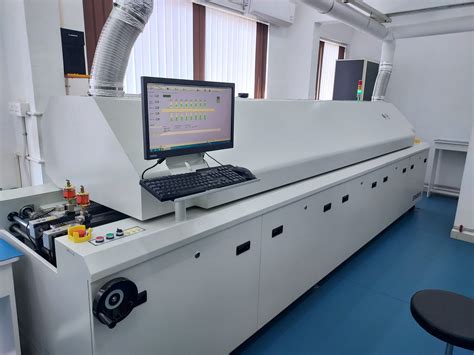
Enhancing Performance: Materials and Methods for Aerospace PCBs
The performance of PCBs (Printed Circuit Boards) in the aerospace sector is critically dependent on the materials used and the methods employed in their PCB assembly. Advanced materials such as high-frequency laminates, ceramics, and flexible substrates have emerged, offering not only improved thermal stability but also superior electrical performance under varying environmental conditions. These materials contribute significantly to the reliability and longevity of the boards used in aerospace applications, where they are often exposed to harsh conditions such as extreme temperatures and radiation.
Additionally, innovative pcb assembly techniques—ranging from laser drilling to surface mount technology (SMT)—have revolutionized the manufacturing process. SMT allows for more compact designs that help to reduce weight, a crucial factor in aerospace engineering. Table 1 below outlines some of the transformative materials and methods currently utilized in aerospace PCBA.
| Material/Method | Benefits | Typical Applications |
|---|---|---|
| High-frequency laminates | Low signal loss, high thermal stability | Communication systems |
| Ceramics | Excellent heat resistance and durability | Satellite components |
| Flexible substrates | Space-saving designs, lightweight | Avionics and control systems |
| Laser drilling | Precision holes for complex designs | High-density interconnections |
| Surface mount technology (SMT) | Reduced weight, enhanced performance | Navigation systems |
By integrating these advancements into their production processes, manufacturers can not only enhance the performance of their aerospace solutions but also improve overall efficiency. The evolution of materials and manufacturing methods continues to drive innovations that support the increasing demands of modern aviation technology. As we look toward future developments, these enhancements are paramount to achieving more reliable and efficient aerospace systems.
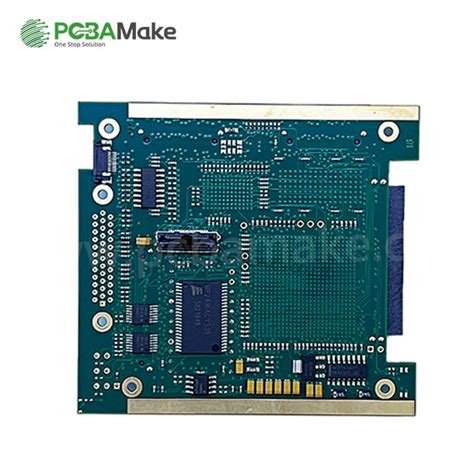
Reliability in Harsh Environments: Advances in Aerospace PCB Design
In the aerospace sector, where reliability and performance are paramount, the significance of advanced PCB assembly techniques cannot be overstated. Aerospace PCBs are often subjected to extreme conditions, including high temperatures, vibrations, and humidity. Thus, recent innovations in aerospace PCB design focus on enhancing their durability and operational effectiveness in harsh environments. Engineers are now leveraging advanced materials such as polyamide substrates and high-temperature laminates that can withstand these challenging conditions. Additionally, the use of conformal coatings has become commonplace to protect PCBA from moisture and corrosive elements, ensuring that electronic components remain functional over extended periods. The integration of sophisticated simulation tools during the design phase allows for thorough testing under simulated environmental stresses, leading to more reliable outcomes. This commitment to improving the reliability of aerospace PCB assembly ensures that systems perform optimally even in the most demanding conditions, ultimately contributing to safer and more efficient flight operations.
Efficiency Improvements through Automation in PCB Assembly
The aerospace industry is experiencing transformative changes due to automation in pcb assembly processes. This shift not only enhances efficiency but also improves the consistency and quality of printed circuit board assemblies (PCBA) used in various aerospace technologies. Automated systems, powered by cutting-edge robotics and artificial intelligence, are streamlining pcb assembly operations, enabling manufacturers to reduce lead times and minimize human error. By integrating sophisticated software for design and quality control, companies can rapidly produce high-quality PCBs that meet stringent aerospace standards. Moreover, the use of automation facilitates real-time monitoring, which allows for immediate adjustments during the production process, thereby enhancing reliability and reducing waste. These improvements in efficiency are crucial as they enable firms to respond more swiftly to market demands while ensuring the high-performance requirements of advanced aerospace systems are met. The future of pcba in aviation will likely see continued advancements in automation technology, setting new benchmarks for production speed and quality in this ever-evolving sector.
Case Studies: Successful Innovations in Aerospace PCB Projects
The rapid evolution of pcb assembly techniques has transformed the aerospace industry, leading to notable successes that highlight the effectiveness of recent innovations. One exemplary case study involves the integration of advanced pcba processes in the development of satellite systems, where the need for lightweight, high-performance materials is critical. Utilizing state-of-the-art manufacturing methodologies, engineers were able to create compact circuit boards that not only enhanced performance but also adhered to strict weight limitations. Another notable project showcased how automation and precision assembly improved production efficiency and reduced error margins in manufacturing pcba for aircraft control systems. This approach has not only increased throughput but has also enabled the implementation of complex designs that were previously deemed unfeasible. Furthermore, a significant focus on reliability in extreme conditions was demonstrated through a project involving avionics systems, where specialized coatings and materials were employed to ensure functionality under intense vibrations and temperature fluctuations. These case studies underscore how innovative strategies in pcb assembly are revolutionizing current technologies within aerospace, promising a future where enhanced capabilities and efficiencies are commonplace.
Future Perspectives: The Role of Emerging Technologies in Aviation PCB Assembly
As the aerospace industry evolves, the integration of emerging technologies into PCB assembly processes is becoming increasingly crucial. The utilization of innovative solutions such as advanced manufacturing techniques and smart automation tools is reshaping the landscape of PCBA. Emerging technologies, including artificial intelligence and machine learning, are enabling engineers to optimize designs and accelerate production cycles, thus ensuring that aerospace PCBs meet the stringent demands of modern aviation applications. Moreover, the adoption of additive manufacturing methods allows for the creation of complex geometries that enhance component performance while reducing weight—an essential factor in improving fuel efficiency and overall aircraft performance. The incorporation of Internet of Things (IoT) devices into PCBA processes provides real-time data analytics, which can help identify potential failures before they occur, thus enhancing reliability and safety in aviation systems. Additionally, materials science advancements are yielding new types of substrates that improve thermal management and expand the operational range for aerospace PCBs in extreme environments. In summary, as these emerging technologies continue to advance, they present a remarkable opportunity for innovation within aerospace PCB assembly, heralding a new era defined by improved efficiency, reliability, and performance in the aviation sector.

Conclusion
In conclusion, the field of aerospace PCB assembly is witnessing remarkable advancements that significantly shape the future of aviation. The integration of innovative techniques and state-of-the-art technologies in pcb assembly processes is enhancing performance metrics across various applications. For instance, the introduction of advanced materials for pcba allows for greater durability, enabling components to withstand extreme conditions often encountered in aerospace environments. These improvements not only boost the overall reliability of aerospace systems but also promote efficiency through automation and streamlined assembly processes. As emerging technologies continue to evolve, they will likely further refine assembly methods and expand the capabilities of pcb assembly, ensuring that aviation remains at the forefront of technological progress. This momentum underscores the critical importance of staying abreast of developments within this sector to maintain a competitive edge and drive innovation in aerospace functionalities.
FAQs
What is aerospace PCB assembly?
Aerospace PCB assembly involves the production and integration of printed circuit boards (PCBs) designed specifically for use in aerospace applications. This process requires specialized techniques and materials to ensure optimal performance in challenging environments.
Why is reliability important in aerospace PCB design?
Reliability is crucial as aerospace components are often subjected to extreme conditions. Advances in aerospace PCB design incorporate innovative materials and engineering methods that enhance the durability and lifespan of PCBs, making them more resilient against environmental stresses.
What are some innovative techniques used in aerospace PCB assembly?
Innovative techniques include the use of advanced soldering methods like selective soldering, as well as high-density interconnections that maximize space utilization on PCBs. These approaches ensure that the assembled boards meet rigorous industry standards for performance and reliability.
How do automation improvements affect PCB assembly efficiency?
Automation streamlines the pcb assembly process, reducing human error and improving precision. Automated systems can enhance throughput, leading to faster production times while maintaining high-quality standards essential for the aerospace industry.
What types of materials are utilized for aerospace PCBs?
Materials used in PCBA for aerospace applications include high-frequency laminates, thermally conductive substrates, and environment-resistant coatings. These materials provide the necessary properties like thermal stability, electromagnetic interference shielding, and overall structural integrity.


